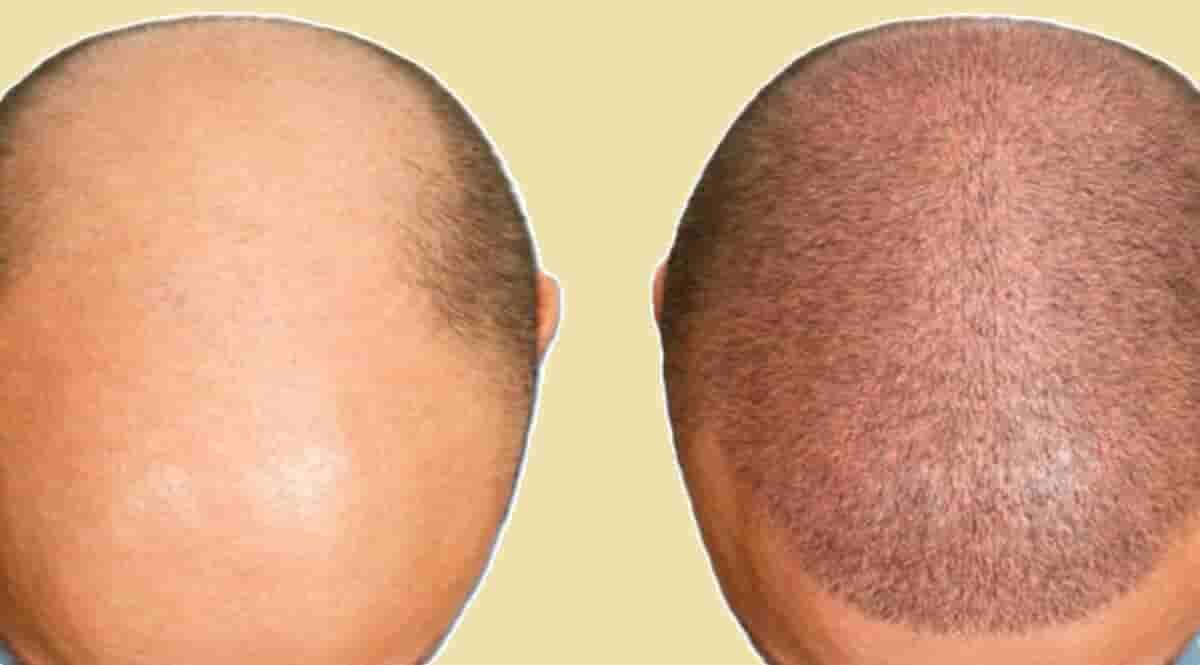Okay, folks, let’s talk HAIR! That glorious crown, that expression of personality, that… sometimes receding hairline that haunts our dreams. We all know the struggle! Thinning hair, bald spots, a creeping forehead – it can be a real confidence killer. But fear not, my friends, because hope is on the horizon! We’re diving headfirst (pun intended!) into the world of hair transplants – and by the end of this post, you’ll be practically an expert, ready to ROCK that revitalized mane!
I’m talking EVERYTHING about hair transplants. From the nitty-gritty science to the real-life transformations, we’re leaving no strand unturned. So grab your coffee, settle in, and prepare to be amazed at what modern science can do for your hair (and your confidence!).
Why Hair Transplants? A Bald Truth (and How to Beat It!)
Let’s be honest, hair loss isn’t just a vanity thing. It can seriously impact self-esteem, make you feel older, and even affect your social life. While there are plenty of temporary solutions like wigs, hairpieces, and even clever styling, they often feel like… well, temporary solutions.
Hair transplants, on the other hand, offer a permanent and natural-looking solution to hair loss. They redistribute your existing hair to areas where it’s thinning, giving you a fuller, thicker head of hair that grows and behaves just like your natural hair. Think of it like landscaping for your scalp! 🌱
But wait! How Does This Magical Hair Gardening Actually Work?
Alright, let’s get into the science! Hair transplants work on the principle of donor dominance. This means that hair follicles transplanted from one area of the body (usually the back or sides of the head, where hair is genetically programmed to be resistant to balding) will retain their characteristics even when transplanted to another area. This is HUGE! It means that the transplanted hair is resistant to the effects of DHT (dihydrotestosterone), the hormone primarily responsible for male pattern baldness.
Essentially, we’re taking strong, healthy hair follicles from areas that are unlikely to bald and relocating them to areas that are thinning. BAM! Problem solved! (Okay, it’s a bit more complex than that, but you get the gist!).
The Two Heavyweight Champions: FUT vs. FUE!
Now, when it comes to hair transplant techniques, two main contenders are battling it out for hair-restoration supremacy: Follicular Unit Transplantation (FUT) and Follicular Unit Extraction (FUE). Let’s break them down, so you can understand which one might be the right fit for you!
- FUT (Follicular Unit Transplantation): The Strip Method!
- Potentially Higher Graft Yield: FUT often allows for the harvesting of a larger number of grafts in a single session compared to FUE.
- Faster Procedure Time: Since the grafts are extracted from a single strip, the overall procedure time can be shorter.
- Potentially More Cost-Effective: In some cases, FUT may be a slightly more cost-effective option due to the faster extraction process.
- Linear Scar: FUT leaves a thin, linear scar at the back of the head. While it can be hidden with longer hair, it may be visible if you prefer to wear your hair very short.
- Longer Recovery Time: Recovery from FUT may take slightly longer compared to FUE, as the incision needs to heal.
- More Post-Operative Discomfort: Some patients may experience more discomfort after FUT due to the larger incision.
Imagine a surgeon carefully removing a thin strip of scalp from the back of your head. Don’t worry, it’s all done under local anesthesia! This strip is then meticulously dissected into individual follicular units (naturally occurring groupings of 1-4 hairs). These units are then implanted into tiny incisions in the recipient area (the bald or thinning area).
Pros of FUT:
Cons of FUT:
- FUE (Follicular Unit Extraction): The Individual Hair Hero!
- No Linear Scar: This is a HUGE advantage for those who prefer to wear their hair short or shaved.
- Shorter Recovery Time: Recovery from FUE is typically faster and less painful compared to FUT.
- Less Post-Operative Discomfort: Most patients experience minimal discomfort after FUE.
- Lower Graft Yield (Potentially): Extracting individual follicles can be more time-consuming, potentially resulting in a slightly lower graft yield per session.
- Longer Procedure Time: The FUE process can take longer than FUT due to the individual follicle extraction.
- Potentially More Expensive: FUE may be a more expensive option due to the increased time and precision required.
FUE involves extracting individual follicular units directly from the scalp using a small, specialized punch tool. This means no large incision, no strip, and no linear scar! Each follicle is carefully removed and then implanted into the recipient area.
Pros of FUE:
Cons of FUE:
Pricing for Hair Transplants
Cost is one of the deciding factors for many patients. Here’s an approximate guide:
- India: Depending on the clinic and expertise, the cost can range from ₹30,000 to ₹1,50,000 (approx. $500 to $2000) for 1000-3000 grafts.
- US: Hair transplants can be significantly more expensive, ranging from $4,000 to $15,000 or more, depending on graft numbers and clinic reputation.
Choosing the Right Technique: It’s All About YOU!
So, which technique is right for you? The answer depends on several factors, including:
- Your Hair Loss Pattern: The extent and pattern of your hair loss will influence the number of grafts required.
- Your Hair Type: Hair type (coarse, fine, curly, straight) can affect the ease of extraction and implantation.
- Your Lifestyle: Consider your hairstyle preferences, activity level, and desired recovery time.
- Your Budget: Both FUT and FUE have different cost structures.
- Your Surgeon’s Expertise: Choose a skilled and experienced surgeon who specializes in both FUT and FUE.
Beyond FUT and FUE: The Cutting Edge of Hair Restoration!
While FUT and FUE are the most common techniques, the world of hair restoration is constantly evolving! Here are a few exciting advancements to keep an eye on:
- Robotic Hair Transplantation: Robotic systems like the ARTAS robot use advanced imaging and precision to assist in the FUE extraction process, potentially improving accuracy and efficiency.
- Direct Hair Implantation (DHI): DHI is a modified FUE technique that uses a specialized implanter pen to directly implant the grafts, minimizing handling and potentially improving graft survival.
- Scalp Micropigmentation (SMP): While not a hair transplant, SMP is a cosmetic procedure that uses micro-needles to deposit tiny dots of pigment onto the scalp, creating the illusion of a fuller head of hair. It’s often used to camouflage scars from previous hair transplant procedures or to add density to thinning areas.
Finding the Right Surgeon: Your Hair’s Best Friend!
This is arguably the MOST important step! Choosing the right surgeon is crucial for a successful and natural-looking hair transplant. Here’s what to look for:
- Board Certification: Ensure your surgeon is board-certified in a relevant specialty, such as dermatology or plastic surgery.
- Experience and Expertise: Look for a surgeon with extensive experience in hair transplantation and a strong track record of successful results.
- Artistic Eye: A good hair transplant surgeon should have an artistic eye and be able to design a hairline that complements your facial features and looks natural.
- Before and After Photos: Review the surgeon’s before and after photos to assess their skill and the quality of their work.
- Consultation and Communication: Schedule a consultation with the surgeon to discuss your goals, assess your candidacy, and ask any questions you may have. A good surgeon will take the time to listen to your concerns and explain the procedure in detail.
- Patient Reviews and Testimonials: Check online reviews and testimonials to get a sense of the surgeon’s reputation and patient satisfaction.
The Hair Transplant Journey: What to Expect!
Okay, you’ve chosen your surgeon, you’ve decided on the technique, now what? Here’s a general overview of the hair transplant journey:
- Consultation: A thorough evaluation of your hair loss and a discussion of your goals and expectations.
- Preparation: Following your surgeon’s instructions, which may include avoiding certain medications, alcohol, and smoking before the procedure.
- The Procedure: The actual hair transplant procedure, typically takes several hours depending on the number of grafts being transplanted.
- Recovery: Post-operative care instructions, including cleaning the scalp, applying prescribed medications, and avoiding strenuous activities.
- Growth Phase: Be patient! Transplanted hair typically starts to grow within 3-6 months, with full results visible in 9-12 months.
Realistic Expectations: Patience is a Virtue!
While hair transplants can deliver amazing results, it’s important to have realistic expectations. You won’t suddenly have a full head of hair like you did in your 20s. The goal is to achieve a natural-looking improvement in hair density and coverage.
Remember, the transplanted hair is your own hair, so it will continue to age and thin over time. However, because it’s resistant to DHT, it’s much more likely to stay put than the hair that was previously thinning.
Is a Hair Transplant Right for You?
Hair transplants are a fantastic option for many people experiencing hair loss, but they’re not for everyone. Ideal candidates typically:
- Have stable hair loss patterns.
- Have sufficient donor hair.
- Are in good overall health.
- Have realistic expectations.
15 Frequently Asked Questions (FAQs)
Is a hair transplant painful?
Most patients report mild discomfort, as the procedure is performed under local anesthesia.
What is the downtime after a hair transplant?
Typically, 7-10 days for FUT and about 5-7 days for FUE.
Are the results permanent?
Yes, transplanted hair is usually permanent as it’s DHT-resistant.
Can women get hair transplants?
Absolutely! Hair transplants work for women experiencing thinning or hair loss.
Do hair transplants look natural?
Advanced techniques ensure natural-looking results.
Will transplanted hair need special care?
No special care is required; treat it like your natural hair.
When will I see the results?
Full results typically appear 9-12 months after the procedure.
How long does the procedure take?
It varies depending on grafts, but usually 4-8 hours.
Is there an age limit for hair transplants?
It’s case-specific, but most surgeons recommend candidates be at least 25.
Can I return to work the next day?
While some do, it’s better to take a few recovery days.
How many grafts will I need?
Your surgeon will estimate this, based on your hair loss stage.
Can transplanted hair fall out?
Temporary shedding may occur but is normal; new hair will grow.
Are there risks?
As with any procedure, there are risks like infection. Choose a qualified surgeon to minimize risks.
Can I get body hair transplantation?
Yes, though scalp hair is preferred, body hair can be used in certain cases.
What is the cost per graft?
In India, approx ₹20-₹120 ($0.30-$1.50), and in the US, around $4-$8 per graft.
The Bottom Line: Reclaim Your Hair, Reclaim Your Confidence!
Hair transplants have revolutionized how we address hair loss, offering a permanent and natural-looking solution for millions worldwide. Whether you’re considering FUT, FUE, or another advanced technique, the key is to research, find a skilled and experienced surgeon, and have realistic expectations.
So, go ahead and take the first step towards reclaiming your hair and your confidence! You deserve to look and feel your best! And remember, a full head of hair isn’t just about vanity; it’s about feeling good about yourself, inside and out!
Now, go forth and conquer that hair loss! You’ve got this! 🚀


